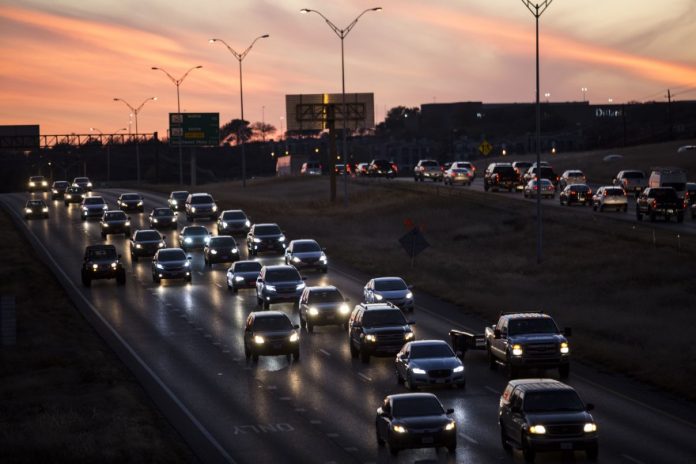This article has been written by Trisha Singh.
Table of Contents
Abstract
This article is an analysis of cab as an aggregator or intermediary under Section 93 of Motor Vehicle Act 2019 along with The Motor Vehicle Aggregators Guidelines, 2020. This article states that the cab like Ola and Uber are intermediary by 2019th motor vehicle amendment act and the reason behind the amendment to include cab as an aggregator is to curb the risk of passenger, driver and pedestrians as the drivers before this amendment uses the handheld device to navigate to the destination. Further, the article discusses the Motor Vehicle Aggregators Guidelines, 2020 in brief and highlights the biased areas of it which demand reformation of the guidelines for cab aggregators.
Introduction
There have been many amendments in motor vehicle act, but the Motor Vehicles Amendment Act 2019 amended Section 93 of the Motor Vehicle Act 1988 and brought the provision for cab aggregators such as Ola and Uber under it as a digital intermediary, which is defined under Section 93 of the Motor Vehicle Amendment Act 2019. So, Motor Vehicle Amendment Act, 2019 adds aggregators as a third category, who has to abide by the rules of the Information Technology Act, 2000 after canvassers and agents. These aggregators would include bike taxis also, which has some disputes with state governments. The main idea behind including cab aggregators under this act is to lower the risk w.r.t to the safety of the passengers, pedestrians as the cab drivers use handheld devices to navigate the destination and get customers online.
Definition of term Aggregator and Rider
An aggregator is a digital intermediary or market-place for a passenger to connect with a driver for the purpose of transportation therefore, Ola and Uber are aggregators. It uses an app to provide its services which are accessed through a communication device.
A rider is a person who avails services through the aggregator app for reaching the destination, by a driver who is integrated with the aggregator.
The reason behind including Cab as an aggregator under Section 93 of Motor Vehicle Amendment Act, 2019
The road transportation system in India has been advanced to much extent with the emergence of technology-aided apps like Uber and Ola whose services have made the means of road transportation very easy. The drivers of these cab services use hands to navigate the location of the destination constantly due to which the safety of the passenger, pedestrian comes at a risk. As a result of which the government of India brought a new motor vehicle amendment act 2019, which provides penal provision for using handheld mobile to follow the navigator and will be fined between 25,000 and 1 lakh for violation of rules or for breaking any traffic regulations.
The Motor Vehicle Amendment Act, 2019 amended Section 93 of the Motor Vehicle Act,1988 stated that the agent or canvasser must obtain a license from such authority as may be prescribed by the state government and no person shall engage himself as an agent in the business of distributing and collecting goods carried by carriages and as a canvasser in the sale of tickets for travel by public transportation facilities or in soliciting customer without the license. Therefore the 2019th amendment included cab as aggregators to curb the risk of road safety, road accidents and corruption in India’s road transport system.
This amendment acknowledges that innovation and technology play a vital role in transforming India’s mobility landscape and the cabs were included as an aggregator that is a digital intermediary under Section 93 of the Motor Vehicle Amendment Act 2019. Since, transport is a matter of state subject, the bill allows these cab aggregators to obtain license from the state governments and shall comply with the provisions of Information Technology Act, 2000.
Why recognition of cab as aggregators by amendment of Motor Vehicle Act 2019 is a great move?
- It is a great move to recognize cab as aggregators to ensure safety on road of the passengers, pedestrian and controls corruption of the Indian road transport system.
- This recognition gives Central Government the authority to formulate guiding policy, as before these amendments different stated had different guiding policies for aggregators that is a different rate of fare, number of passengers traveling in a vehicle and some didn’t have any. In a recent incident in Karnataka, the Karnataka transport department cancelled the license of Ola cabs after it was found flouting the rules of aggregator by allegedly operating two wheelers’ bikes and taxis, without permission.
- By this amendment the Centre can frame guidelines depending upon problems faced by the locals like congestion, which every state has to abide and the central government has even recognized the taxi aggregators as a key stakeholder.
The Motor Vehicle Aggregators Guidelines, 2020
The ministry has issued the guidelines to regulate the cab aggregator market which has been issued in pursuance of Section 93 of the Motor Vehicle Amendment Act, 1988 to which the state governments may allude while issuing the license to any cab aggregator.

Key guidelines
- Regulation of Aggregator- It seeks to regulate the cab aggregator market and mentions that the aggregator must have a registered office in India as a company registered under the Companies Act and has to comply with Information Technology Act, 2000 and rules made thereunder such as Intermediary guidelines.
- Licensing Requirements – The aggregator must apply for the license in states, where it seeks to operate and a license issued by the state government will be a mandatory pre-requisite for allowing business operations by the aggregator. State governments will have to abide by the guidelines issued by the Central Government while granting the license to an aggregator and must perform its operations within 6 months from the date of grant of license else it stands revoked. The license of the aggregator can be suspended if there is “systemic failure” to ensure the safety of the driver, rider, violation of contractual obligations, repetitive instances of financial differences related to the fares, unwarranted surge pricing, severity of financial fraud, and violation of safety standards among others.
- Regulation of fare – The base charge of a trip would be on the basis of the city tax charge as mentioned in WPI. Surge pricing has been capped at 1.5x of the base charge, while minimum price chargeable has been capped at 50% of the base charge, the share of aggregator capped at 20% but the driver of the vehicle must receive 80% of the total price. The cancellation charge for the driver and the rider has been capped at 10% of the total charge not being more than 100 INR. Aggregators are allowed to charge a price 50% cheaper than the base charge and a maximum surge pricing of 1.5 times the base charge.
- Protocols of hiring a driver – Along with a thorough background check of the driver with a medical examination the aggregator should have an Induction Training Programmed for recruiting drivers on how to wield the app, follow the relevant Motor Vehicle Laws, drive carefully, imparting first responder training, gender sensitization, and maintain hygiene in the cab after a comprehensive check of the background and medical examination of the driver. The Guidelines make it obligatory for the driver to take a 10-hour break and the driver isn’t permitted to drive more than 12 hours on a single day.
- Aggregator compliances – There must be the assurance by the aggregator that the vehicle is governed by motor vehicle laws, insurance and emission norms. The aggregator should establish a 24/7 control room to monitor cabs and call centres with a valid telephone number for grievance redressal and aid the driver and rider and must provide options to women to carpool with women and ensure women safety.
- App related conditions – The aggregator’s app must be in Hindi, English and the regional language of the state. The app data should have the server of India minimum for 3 months and a maximum for 24 months. This data would be accessible to the relevant government authorities and no customer data would be shared without the written consent of the customer.
- Power of the Competent Authority to take Suo moto cognizance of the wrongdoings of the aggregator and suspend the license and if the number of suspensions in one financial year exceed 3 that would lead to cancellation of license. Further, if the aggregator commits any blatant offence or has cut out to receive its license and NOC pursuant to the layoff order, that would also lead to revocation of the order. The aggregator must lay off all its operations as soon as the license is suspended and if the aggregator wishes, it can appeal against the order passed by the authority within 30 days of such order being made, to the State Government. The State Government can call for any information if it deems necessary from the aggregator for compliance under the Guidelines, empowered to conduct search and investigation at the aggregator’s premises under the Guidelines when the need occurs.4
Comments
- The motor Vehicle Aggregator Guidelines 2020 proves that the government is trying to regulate the business in its manner. As the capping of the commission rates is trying to regulate how the business makes money.
- The government states that the cancellation fee will be borne by both parties must not exceed 100 rupees. The idea of female pooling is good but at what cost as the guidelines are so regressive as they are trying to startup license raj and increase the cost of compliance for the business extending the red-tapism.
- The surge fee which acts as an incentive has been capped at 1.5 times the base fare and is likely to dampen the earnings for both aggregators and drivers. The commission charged by the cab aggregators earlier was 25 % which now is capped to 20%.
- These guidelines leave a lot of questions in the mind of individual analyzing it and state that the aggregator is expected to let driver log in for 30 hours of driving and suggest some strictest filtering process of driver’s selection, working hours and training so, what is the point of a driving license if the aggregator has to make sure whether the drivers know how to drive in the first place or not?
- The state government’s share of 2% above the fare towards the state exchequer doesn’t make sense and it is due to biases that consumers are being charged extra tax just because they are using an aggregator and not availing the services of local taxi operators.
- Apart from the above-mentioned points, the guidelines aim to reduce traffic congestion, pollution, regulate shared mobility, maximum the use of public transport in order to reduce pollution and harm to human beings and requires the state governments to make a regulatory framework for aggregators to be held responsible for its operations.
Conclusion
The idea of including a cab as an intermediary under the Motor Vehicle Act, 2019 is noble to the extent that it enhances the safety protocols of the passengers, pedestrians and drivers. The motor Vehicle Aggregator Guidelines 2020 is an initiative to control pollution, congestion. But besides these, there are many loopholes in the guidelines that state that the government is trying to regulate the business in its own fashion which makes the guidelines very rigid to analyse. The centre should reform guidelines with less rigidity so that there is no useless filtering process of the driver for the license, the surge fee which is capped at 1.5 times the base fare which dampens the earnings for both aggregators and drivers, the commission charged by the cab aggregators earlier was 25 % which now is capped to 20% hampering the business must be resolved by reforming the guidelines.
LawSikho has created a telegram group for exchanging legal knowledge, referrals, and various opportunities. You can click on this link and join:
https://t.me/joinchat/J_0YrBa4IBSHdpuTfQO_sA
Follow us on Instagram and subscribe to our YouTube channel for more amazing legal content.
 Serato DJ Crack 2025Serato DJ PRO Crack
Serato DJ Crack 2025Serato DJ PRO Crack









 Allow notifications
Allow notifications



